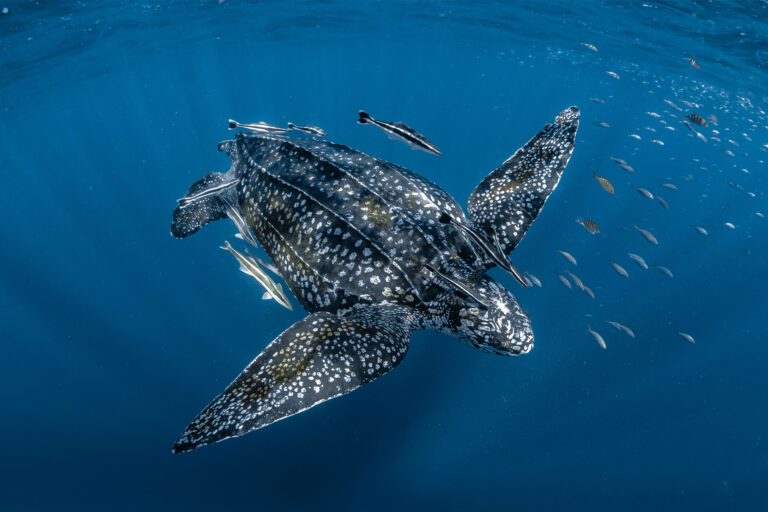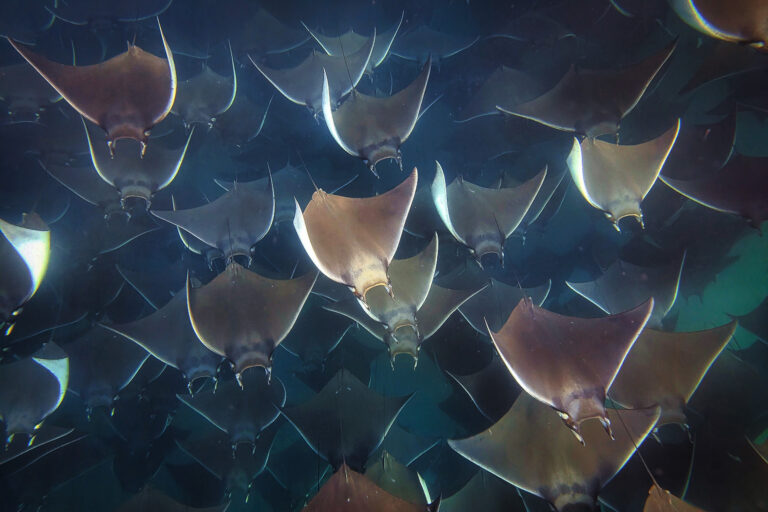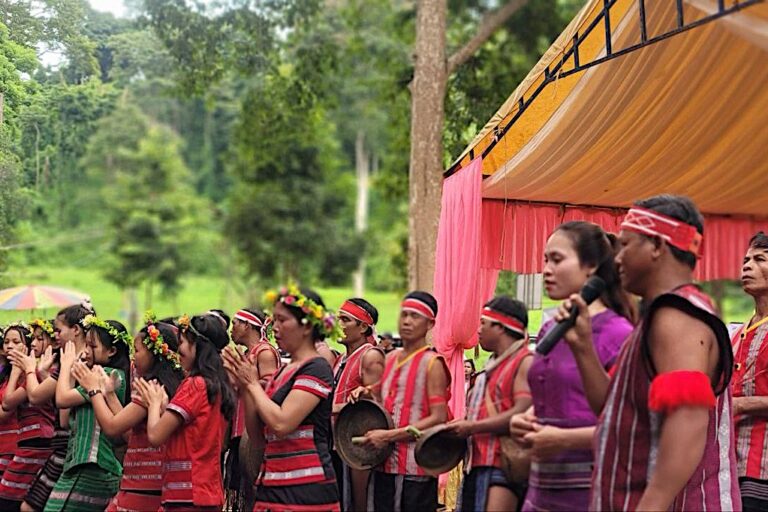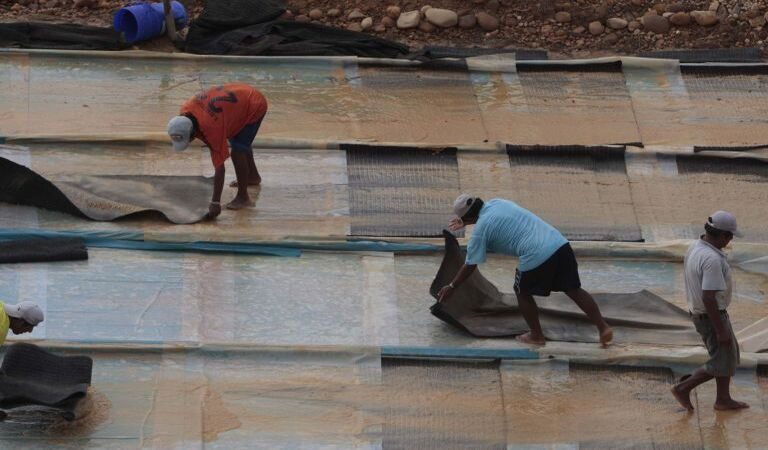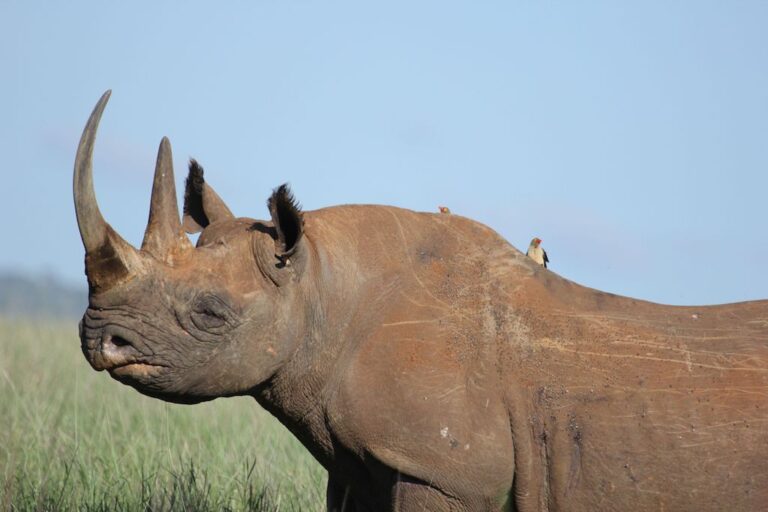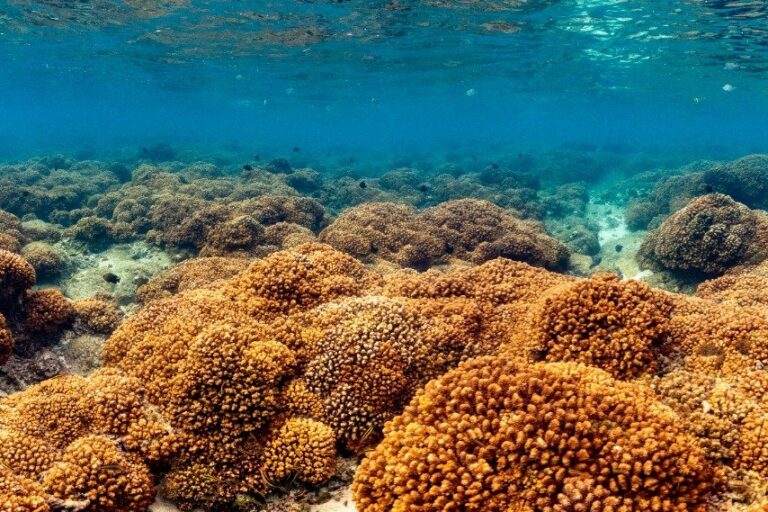- Despite being widespread across the Pacific and Indian oceans, coconut crabs are disappearing across their range, according to a new conservation assessment that warns they’re vulnerable to extinction.
- The species, the largest land crab in the world, is threatened by habitat destruction for coastal development and agriculture, as well as by harvesting for the seafood trade.
- The harvesting is also impacting reproductive outcomes for the crabs, given the preference among both consumers and female crabs for bigger male crabs.
- Some conservation groups are already working on the ground in places like Indonesia’s West Papua province to educate community members, tourism operators, guides, and tourists about the importance of coconut crabs.
Coconut crabs, known in Indonesia as ketam kenari, are the world’s largest land crab. They’re also quite an unusual species: these invertebrates can live up to 60 years and measure a meter long (3 feet) from leg to leg, with claw strength 10 times greater than a human’s grip. While most photographs of these crabs show them during the day, coconut crabs are actually nocturnal, and despite their name, they don’t solely eat coconuts — although they’re capable of ripping them apart with their impressive claws.
Coconut crabs (Birgus latro) are widespread across the Pacific and Indian oceans, including in Indonesia, which straddles both. But a newly published conservation assessment finds they’re also edging closer to extinction. The species’ conservation status is now listed as “vulnerable” by the IUCN, the global conservation authority.
“We were getting reports of coconut crab populations either declining or being extirpated from areas,” said assessment co-author Neil Cumberlidge, chair of the Freshwater Crustacean Specialist Group at the IUCN and professor of biology at Northern Michigan University. “This was coming initially from the Pacific, but other people were chiming in and saying, ‘Yeah, I’ve noticed it where I am … in eastern Indonesia.’”

Coconut crabs had previously been classified on the IUCN’s Red List as data deficient (meaning there wasn’t enough available information to assess their status); but since the last check in 1996, there have been myriad studies on their behavior, ecology and conservation. Cumberlidge and a team of crab biologists, including Dwi Rahayu and Daisy Wowor from Indonesia’s National Research and Innovation Agency, collated information from the scientific literature, museum records, and discussions with other crab specialists to get an up-to-date picture of the coconut crab’s conservation status. The group published their findings in the Raffles Bulletin of Zoology in January.
Although coconut crabs can be found in dozens of countries, including as far north as southern Japan, they’re restricted to coastal regions. Adult crabs migrate across land back to the water to spawn, and their offspring float around the ocean for up to six weeks before returning to shore. In Indonesia, those shores tend to be on islands in the Sulawesi, Maluku and Papua regions, although historical records indicate the crabs have also been spotted in eastern Borneo and eastern Java.
Habitat destruction for coastal development and agriculture is dangerous for coconut crabs. They prefer to live in rocky shores and rainforests close to the coast. When those disappear, coconut crabs have nowhere to go. “A lot of land crabs are like that,” said Victoria Watson-Zink, a doctoral student in population biology at the University of California, Davis, and a co-author of the IUCN assessment. “Once they are in their terrestrial phase, they don’t use their gills really … to respire. So if you put them back in the water they drown, because they use a different membrane to breathe.”
“The coconut crab is one of the crabs that does that. It’s really interesting, because you have this life stage that is in the ocean, but then there’s a transition that happens, and then they move onto land.”

There are three dozen or so Indonesian islands known to have coconut crab populations; of these, the crab has disappeared from just two: Hiri, a small island in the northern Malukus, and Piaynemo in the Raja Ampat archipelago off West Papua. That might seem like a small number, but Wowor says the crab’s population in Indonesia is decreasing overall due to habitat loss and unsustainable harvesting practices. “People are catching [the crabs], and then they send them to bigger cities,” she said, giving the example of Ternate in North Maluku province, where locals collect coconut crabs and send them to Manado on the larger island of Sulawesi. Live crabs are shipped to seafood restaurants, where they sell for about $20 each. Large female crabs can even fetch up to $35 in select Ternate eateries.
This harvesting is changing Indonesia’s coconut crab populations in other ways beyond sheer numbers. Large crabs are becoming increasingly rare, which could have ramifications for their reproduction. “When females choose males to mate with, they try to find a mate that’s either their same size or bigger,” Watson-Zink said. “So, if we are making the population so that the male crabs are smaller, then the females are less likely to mate with those males, and when they do mate there is less chance that there is going to be a successful fertilization.” Larger female crabs also produce larger offspring more likely to survive their ocean journeys. On top of the shift toward smaller crabs, studies on some Indonesian islands have found that the ratios of male to female crabs are drastically different from 50:50 — sometimes in favor of females, other times males — which could further negatively affect their reproduction.
There’s a clear need for better coconut crab population estimates across Indonesia. Much of the research to date has counted crabs in one location at a single point in time, and there’s little to no monitoring. Coconut crabs generally tend to flourish in areas where there are no people, but performing research in those remote areas is logistically challenging and can be expensive. But it’s also vital: in locations where demographic studies have been completed, the IUCN study concluded that breeding populations of coconut crabs have dropped about 30% over the past 15-20 years.
While the new IUCN assessment is important for raising awareness about the plight of coconut crabs, Indonesian conservationists have been on the case for a while. Meidiarti Kasmidi, who coordinates sustainable tourism and alternative livelihood initiatives in West Papua province for Conservation International, the global environmental NGO, is one of them. Kasmidi works directly with island communities and the provincial government’s conservation agency, known by its Indonesian acronym BKSDA, on programs to survey and protect coconut crabs. According to Kasmidi, some people in the Raja Ampat archipelago continue to harvest and sell these crabs despite the fact that the animal is protected under Indonesian law. In 2019, the coconut crab population on Raja Ampat’s Fam Islands numbered 12,000 individuals, according to Conservation International, but people are catching about 3,200 per year — meaning the crabs could disappear from the islands within just four years without conservation management.

To address this, Conservation International and the BKSDA are currently educating community members, tourism operators, guides, and tourists in West Papua about the importance of coconut crabs. On the Fam Islands, they’re working with farmers’ groups to protect crab habitat and develop an educational tourism scheme so that these communities see some economic benefits from their conservation efforts. Homestay owners in Raja Ampat are also refusing to cook coconut crabs for tourists, which is expected to stop some of the local trade of these animals.
The coconut crab’s new status as a vulnerable species should lead to more conservation efforts both within Indonesia and across its habitat range. “It’s an important step in [the crab’s] conservation,” Cumberlidge said. For the IUCN group, the next step is to gather crab biologists and conservationists to create a conservation action plan to detail how to stop coconut crab populations from further decline.
Addressing the dual threats of harvesting and habitat loss seems to be the most pressing conservation need in Indonesia. “I just want people to understand that they have to conserve this crab because if not … the crab will [go] extinct,” Wowor said. “They have two big pressures from humans: collecting for consumption, and the other one is, of course, habitat conversion.” Other threats that come with coastal development, like pollution and increased human presence in once-isolated crab habitat, may also spell trouble for these land giants.
Right now, the researchers say, it’s important to spread the word about the plight of coconut crabs. “We just want to get the word out about these crabs and their change of status,” Cumberlidge said. “It’s a bigger deal than it sounds.”
Banner image of a coconut crab by Drew Avery via Flickr (CC BY 2.0).
Citations:
Oka, S., Tomita, T., & Miyamoto, K. (2016). A mighty claw: Pinching force of the coconut crab, the largest terrestrial crustacean. PLOS ONE, 11(11), e0166108. doi:10.1371/journal.pone.0166108
Cumberlidge, N., Caro, T., Watson-Zink, V. M., Naruse, T., Ng, P. K. L., Orchard, M., … White, T. (2022). Troubled giants: The updated conservation status of the coconut crab (Birgus latro). Raffles Bulletin of Zoology, 70, 1-21. doi:10.26107/RBZ-2022-0001
Sato, T., & Yoseda, K. (2010). Influence of size- and sex-biased harvesting on reproduction of the coconut crab Birgus latro. Marine Ecology Progress Series, 402, 171-178. doi:10.3354/meps08369
Sato, T., & Suzuki, N. (2010). Female size as a determinant of larval size, weight, and survival period in the coconut crab, Birgus latro. Journal of Crustacean Biology, 30(4), 624-628. doi:10.1651/10-3279.1







